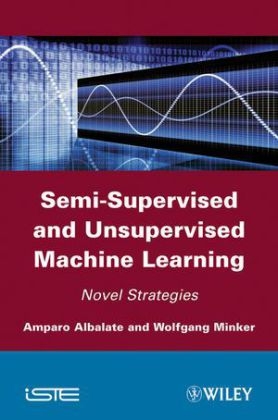
Semi-Supervised and Unsupervised Machine Learning
ISTE Ltd and John Wiley & Sons Inc (Verlag)
978-1-84821-203-9 (ISBN)
- Titel z.Zt. nicht lieferbar
- Versandkostenfrei innerhalb Deutschlands
- Auch auf Rechnung
- Verfügbarkeit in der Filiale vor Ort prüfen
- Artikel merken
This book provides a detailed and up-to-date overview on classification and data mining methods. The first part is focused on supervised classification algorithms and their applications, including recent research on the combination of classifiers. The second part deals with unsupervised data mining and knowledge discovery, with special attention to text mining. Discovering the underlying structure on a data set has been a key research topic associated to unsupervised techniques with multiple applications and challenges, from web-content mining to the inference of cancer subtypes in genomic microarray data. Among those, the book focuses on a new application for dialog systems which can be thereby made adaptable and portable to different domains. Clustering evaluation metrics and new approaches, such as the ensembles of clustering algorithms, are also described.
Amparo Albalate,?University of Ulm, Institute of Information Technology, Germany. Wolfgang Minker, University of Ulm, Institute of Information Technology, Germany.
PART 1. STATE OF THE ART 1
Chapter 1. Introduction 3
1.1. Organization of the book 6
1.2. Utterance corpus 8
1.3. Datasets from the UCI repository10
1.4. Microarray dataset 13
1.5. Simulated datasets 14
Chapter 2. State of the Art in Clustering and Semi-Supervised Techniques 15
2.1. Introduction 15
2.2. Unsupervised machine learning (clustering) 15
2.3. A brief history of cluster analysis 16
2.4. Cluster algorithms 19
2.5. Applications of cluster analysis 52
2.6. Evaluation methods 77
2.7. Internal cluster evaluation 77
2.8. External cluster validation 80
2.9. Semi-supervised learning 84
2.10. Summary 88
PART 2. APPROACHES TO SEMI-SUPERVISED CLASSIFICATION 91
Chapter 3. Semi-Supervised Classification Using Prior Word Clustering 93
3.1. Introduction 93
3.2. Dataset 94
3.3. Utterance classification scheme 94
3.4. Semi-supervised approach based on term clustering 98
3.5. Disambiguation 113
3.6. Summary 124
Chapter 4. Semi-Supervised Classification Using Pattern Clustering 127
4.1. Introduction 127
4.2. New semi-supervised algorithm using the cluster and label strategy 128
4.3. Optimum cluster labeling 132
4.4. Supervised classification block 154
4.5. Datasets 159
4.6. An analysis of the bounds for the cluster and label approaches 162
4.7. Extension through cluster pruning 164
4.8. Simulations and results 173
4.9. Summary 179
PART 3 . CONTRIBUTIONS TO UNSUPERVISED CLASSIFICATION – ALGORITHMS TO DETECT THE OPTIMAL NUMBER OF CLUSTERS 183
Chapter 5. Detection of the Number of Clusters through Non-Parametric Clustering Algorithms 185
5.1. Introduction 185
5.2. New hierarchical pole-based clustering algorithm 186
5.3. Evaluation 190
5.4. Datasets 192
5.5. Summary 197
Chapter 6. Detecting the Number of Clusters through Cluster Validation 199
6.1. Introduction 199
6.2. Cluster validation methods 201
6.3. Combination approach based on quantiles 206
6.4. Datasets 212
6.5. Results 214
6.6. Application of speech utterances 223
6.7. Summary 224
Bibliography 227
Index 243
| Verlagsort | London |
|---|---|
| Sprache | englisch |
| Maße | 163 x 241 mm |
| Gewicht | 508 g |
| Einbandart | gebunden |
| Themenwelt | Informatik ► Datenbanken ► Data Warehouse / Data Mining |
| Technik ► Elektrotechnik / Energietechnik | |
| ISBN-10 | 1-84821-203-8 / 1848212038 |
| ISBN-13 | 978-1-84821-203-9 / 9781848212039 |
| Zustand | Neuware |
| Haben Sie eine Frage zum Produkt? |
aus dem Bereich


